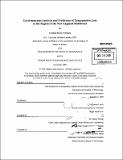| dc.contributor.advisor | James Lynch. | en_US |
| dc.contributor.author | Hornick, Heather René | en_US |
| dc.contributor.other | Woods Hole Oceanographic Institution. | en_US |
| dc.coverage.spatial | n-usn-- | en_US |
| dc.date.accessioned | 2010-05-27T14:13:14Z | |
| dc.date.available | 2010-05-27T14:13:14Z | |
| dc.date.copyright | 2009 | en_US |
| dc.date.issued | 2009 | en_US |
| dc.identifier.uri | http://hdl.handle.net/1721.1/55299 | |
| dc.description | Thesis (S.M.)--Joint Program in Oceanography/Applied Ocean Science and Engineering (Massachusetts Institute of Technology, Dept. of Mechanical Engineering; and the Woods Hole Oceanographic Institution), 2009. | en_US |
| dc.description | Cataloged from PDF version of thesis. | en_US |
| dc.description | Includes bibliographical references (p. 140-141). | en_US |
| dc.description.abstract | A confluence of several coastal oceanographic features creates an acoustically interesting region with high variability along the New England Shelfbreak. Determining the effect of the variability on acoustic propagation is critical for sonar systems. In the Nantucket Shoals area of the Middle Atlantic Bight, two experiments, the New England Shelfbreak Tests (NEST), were conducted in May and June, 2007 and 2008, to study this variability. A comprehensive climatology of the region along with the experimental data provided detailed information about the variability of the water column, particularly the temperature and sound speed fields. Empirical orthogonal function (EOF) analysis of the ocean sound speed field defined a set of perturbations to the background sound speed field for each of the NEST Scanfish surveys. Attenuation due to bottom sediments is the major contributor of transmission loss in the ocean. In shallow water, available propagation paths most often include bottom interaction. Perturbations in the ocean sound speed field can cause changes in the angle of incidence of sound rays with the bottom, which can result in changes to the amount of sound energy lost to the bottom. In lieu of complex transmission loss models, the loss/bounce model provides a simpler way to predict transmission loss changes due to perturbations in the background sound speed field in the ocean. Using an acoustic wavenumber perturbation method, sound speed perturbations, defined by the ocean EOF modes, are translated into a change in the horizontal wavenumber, which in turn changes the modal angle of incidence. | en_US |
| dc.description.abstract | (cont.) The loss/bounce model calculates the loss of sound energy (dB) per bottom bounce over a given distance based on the change in angle of incidence. Evaluated using experimental data from NEST, the loss/bounce model provided accurate predictions of changes to transmission loss due to perturbations of the background sound speed field. | en_US |
| dc.description.statementofresponsibility | by Heather René Hornick. | en_US |
| dc.format.extent | 141 p. | en_US |
| dc.language.iso | eng | en_US |
| dc.publisher | Massachusetts Institute of Technology | en_US |
| dc.rights | M.I.T. theses are protected by
copyright. They may be viewed from this source for any purpose, but
reproduction or distribution in any format is prohibited without written
permission. See provided URL for inquiries about permission. | en_US |
| dc.rights.uri | http://dspace.mit.edu/handle/1721.1/7582 | en_US |
| dc.subject | Mechanical Engineering. | en_US |
| dc.subject | /Woods Hole Oceanographic Institution. Joint Program in Oceanography/Applied Ocean Science and Engineering. | en_US |
| dc.subject | Woods Hole Oceanographic Institution. | en_US |
| dc.subject.lcsh | Underwater acoustics | en_US |
| dc.subject.lcsh | Sound Speed | en_US |
| dc.title | Environmental analysis and prediction of transmission loss in the region of the New England Shelfbreak | en_US |
| dc.type | Thesis | en_US |
| dc.description.degree | S.M. | en_US |
| dc.contributor.department | Joint Program in Oceanography/Applied Ocean Science and Engineering | en_US |
| dc.contributor.department | Woods Hole Oceanographic Institution | en_US |
| dc.contributor.department | Massachusetts Institute of Technology. Department of Mechanical Engineering | |
| dc.identifier.oclc | 613216578 | en_US |
